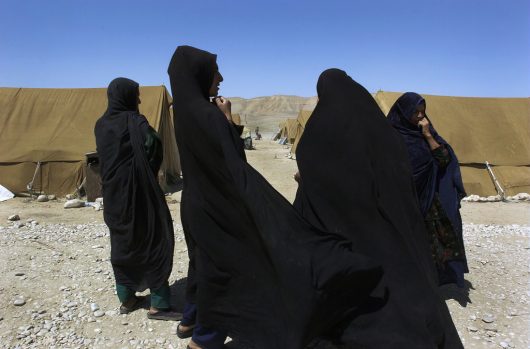Ten Facts About Refugees in Iran

Due to over three decades of war, the Islamic Republic of Iran has become host to millions of Afghan refugees. There are a total number of 979,410 documented refugees in Iran and an estimated 1.5 million undocumented. The UN refugee agency (UNHCR) has reported 951,142 of those documented refugees have come from Afghanistan and 28,268, from Iraq.
Discussed below are pertinent facts and statistics about refugees in Iran and what the international community is doing to help
Top 10 Facts about Refugees in Iran
- Until recently, the UNHCR reports that Iran was the fourth largest refugee-hosting country in the world. Urban areas accommodate 97% of the refugees; the remaining three percent reside in settlement dwellings.
- For more than 30 years, Afghan refugees in Iran have been assisted and safeguarded by the government. Tremendous efforts have been made to offer them healthcare, education and prospects for finding employment. Recently, the government included refugees in a universal national health insurance program.
- In 2016, the UNHCR along with the Iranian government focused primarily on programs in health, education and economic enhancements intended to encourage refugees to assist in rebuilding Afghanistan.
- The UNHCR is supporting the implementation of the Iran Portfolio of Projects, which includes: voluntary repatriation, sustainable reintegration and assistance to host countries.
- The EU has been funding humanitarian projects to help Afghan refugees in Iran since 2000 and has recently been directing assistance to the 1.5 million undocumented refugees. In 2016, 2.5 million euros was allocated to address education for out of school Afghan refugee children.
- Undocumented Afghans usually face increased difficulties with respect to economic opportunities, healthcare, access to education and other vital services. Typically, because they have no legal status, they are not eligible for humanitarian assistance.
- The World Food Programme (WFP) has been providing humanitarian food assistance in Iran since 1987. The WFP works to distribute food to vulnerable Afghan and Iraqi refugees living in settlements.
- Technical training and educational assistance provided by the WFP helps young refugees improve their future economic opportunities and assists in reintegration to their respective countries.
- The WFP also provides enriched vegetable oil to the youth in settlements as an incentive for school attendance. Consequently, there has been increased regular primary and secondary attendance in schools, particularly girls’ attendance.
- The WFP and the UNHCR have also collaborated on a far-reaching Joint Assessment Mission (JAM) to calculate the food and non-food requirements of refugees. The organizations are gauging the practicability of exclusively relying on cash-based transfers.
– Heidi Grossman
Photo: Flickr
